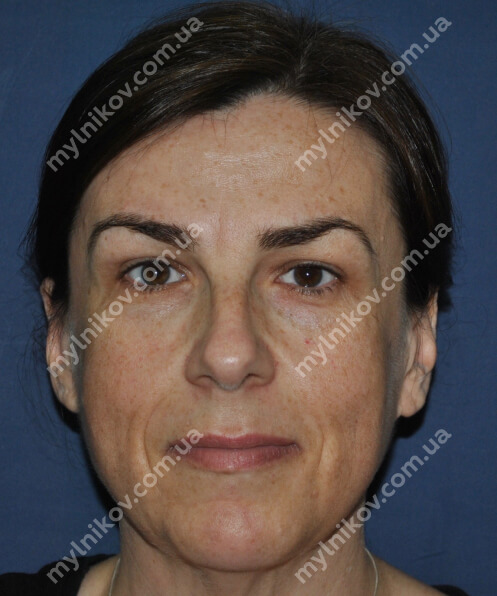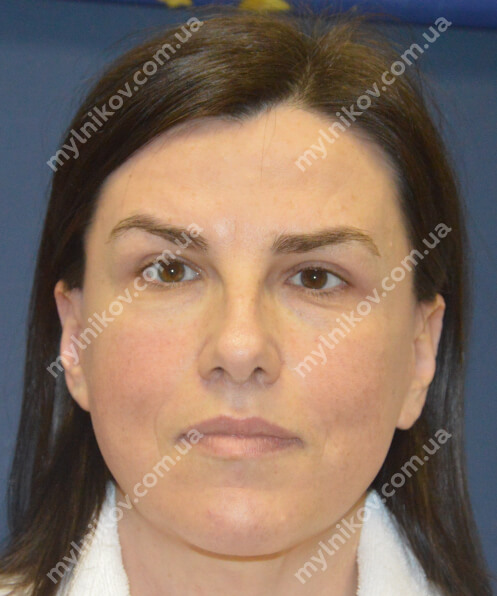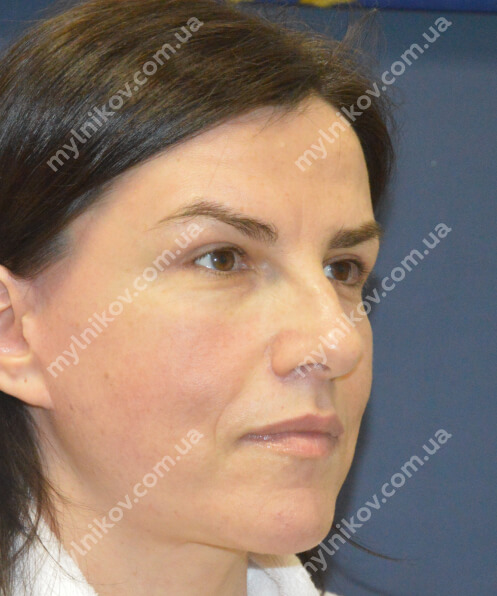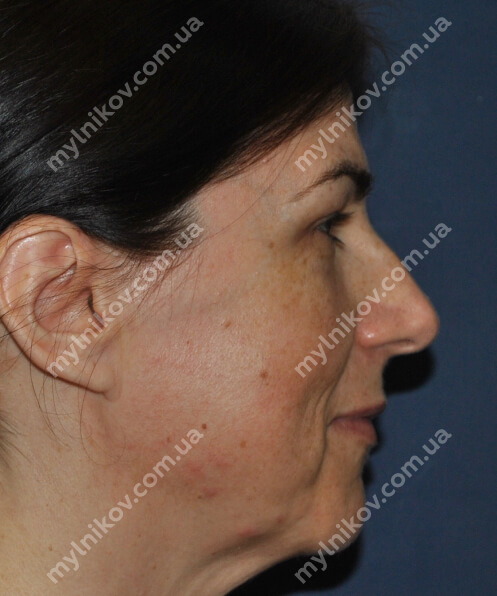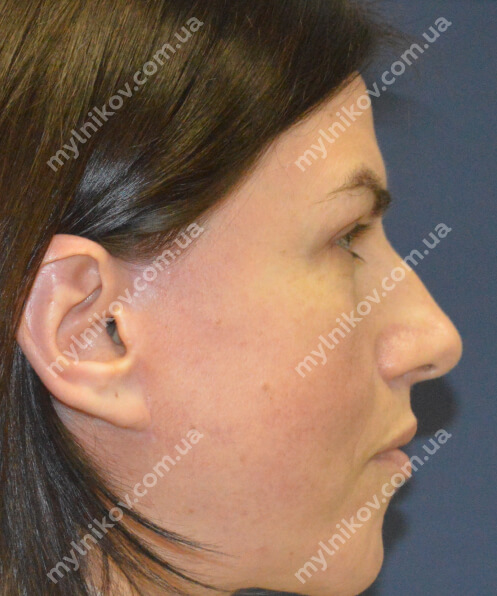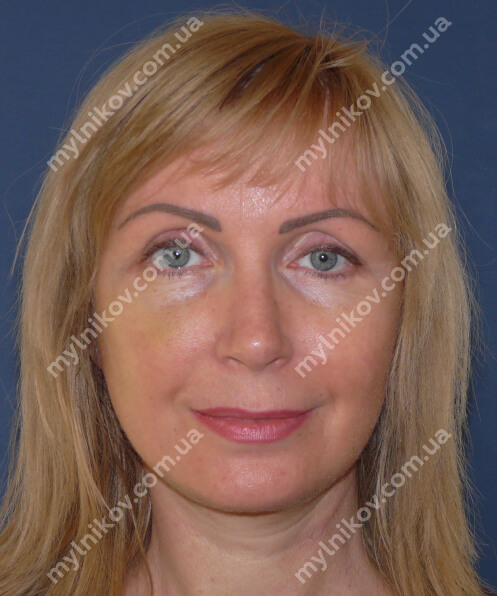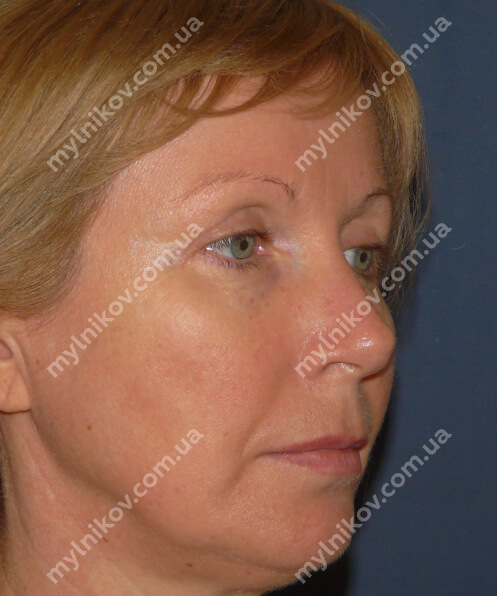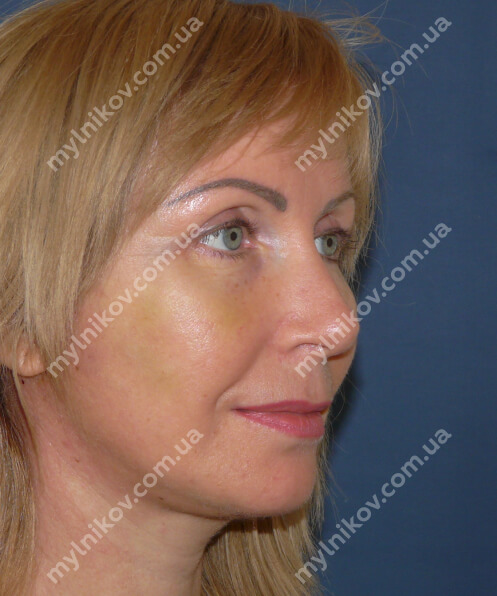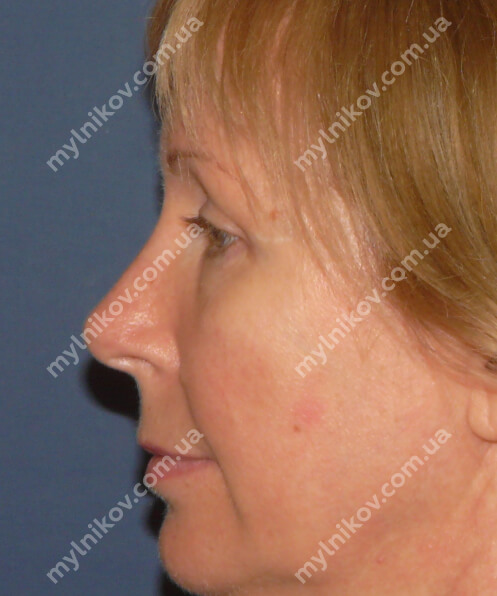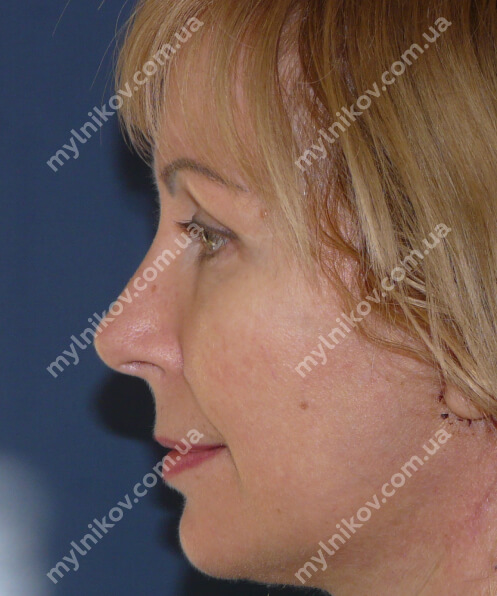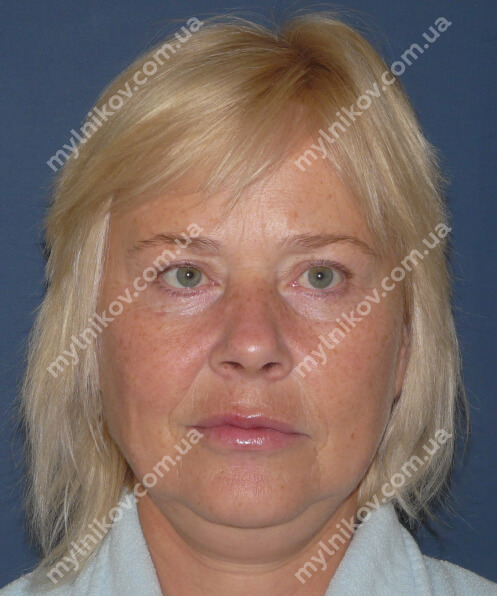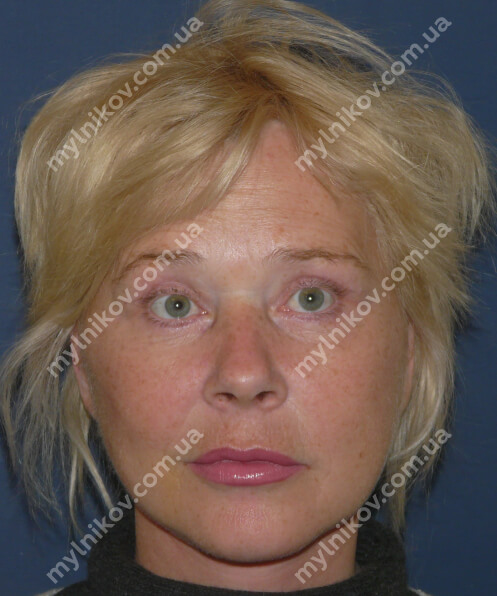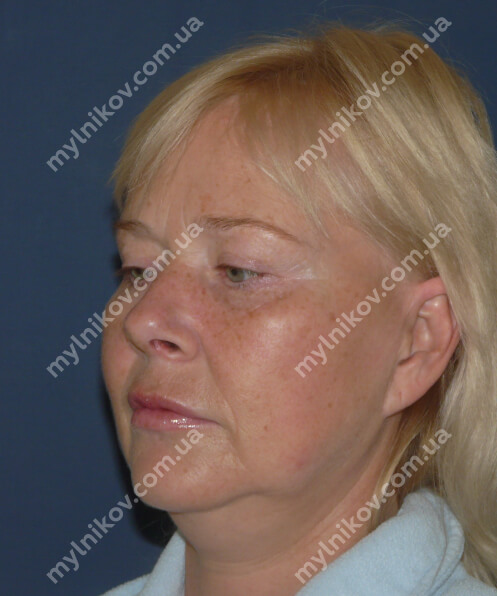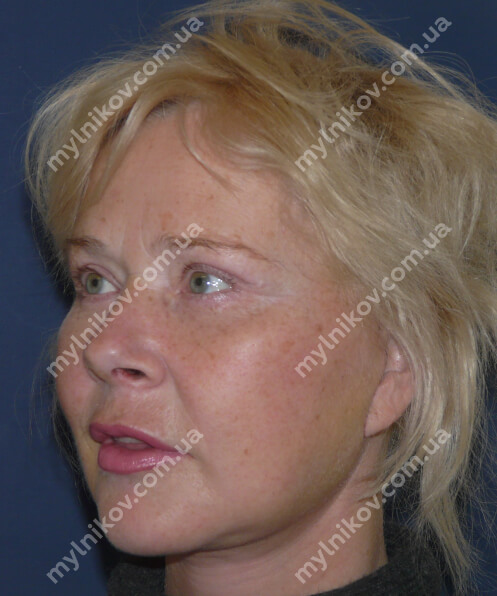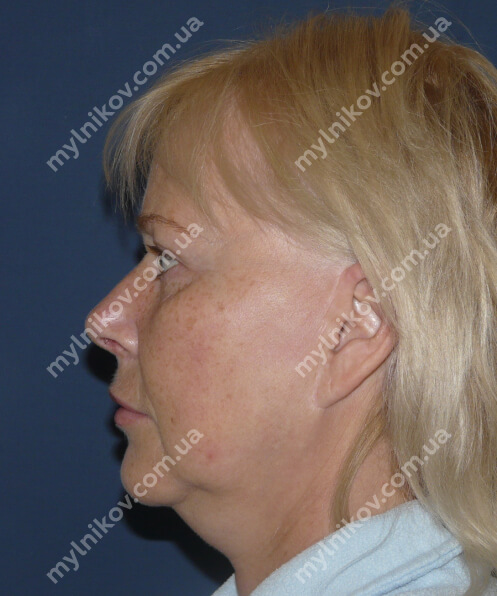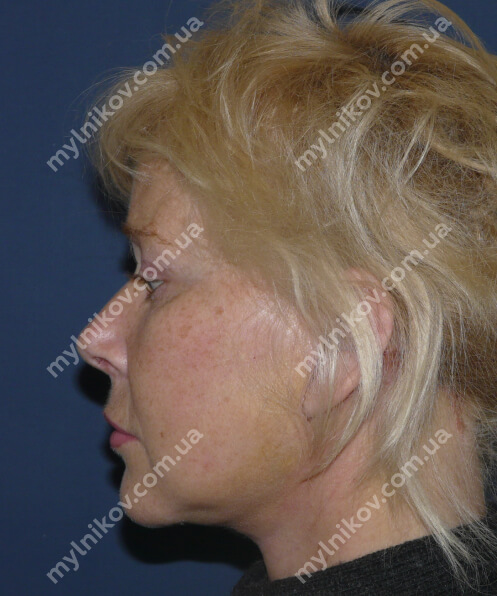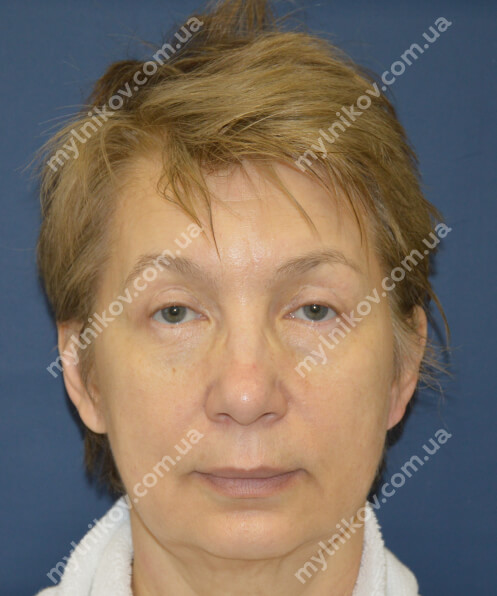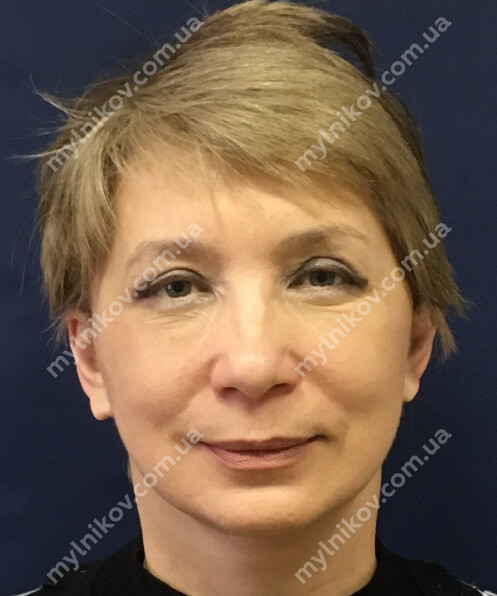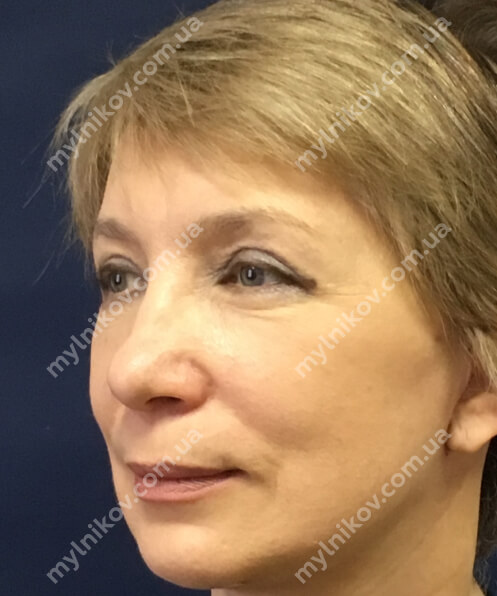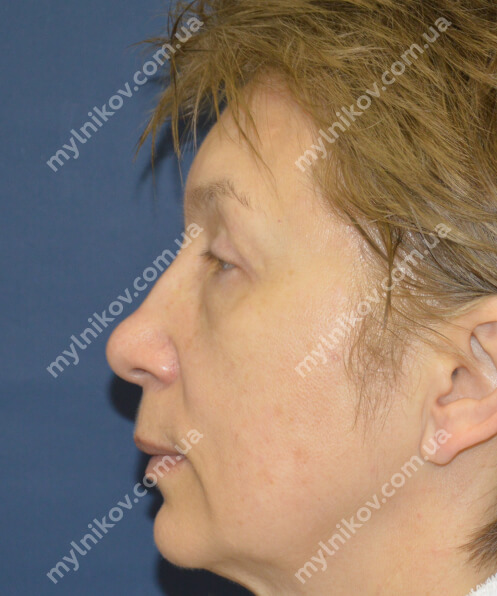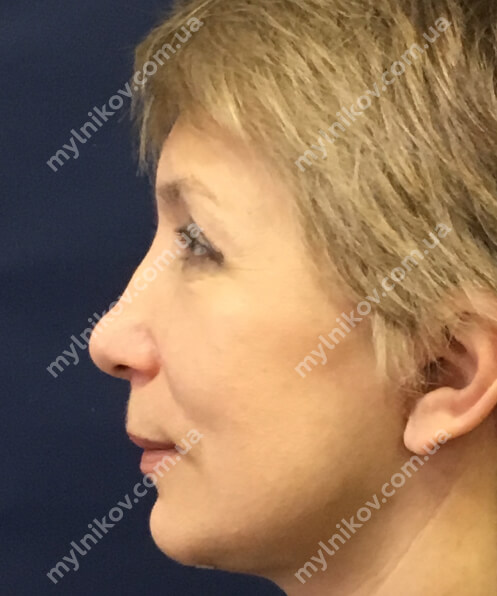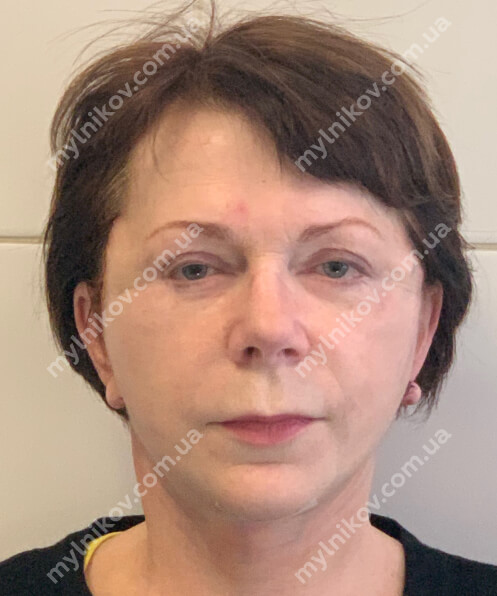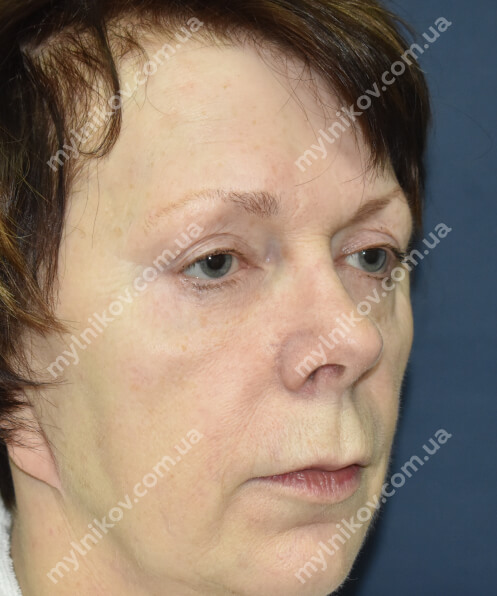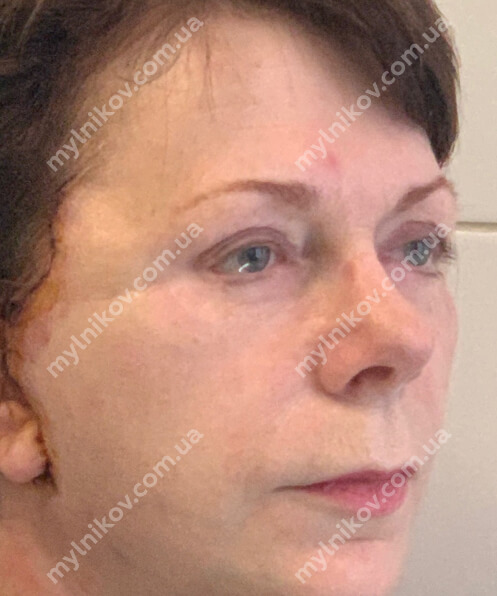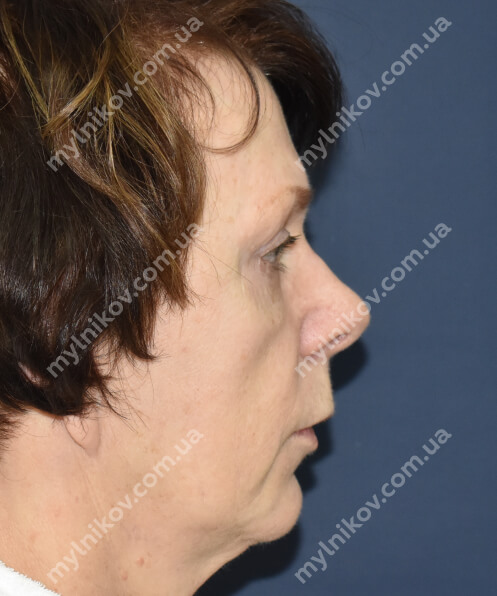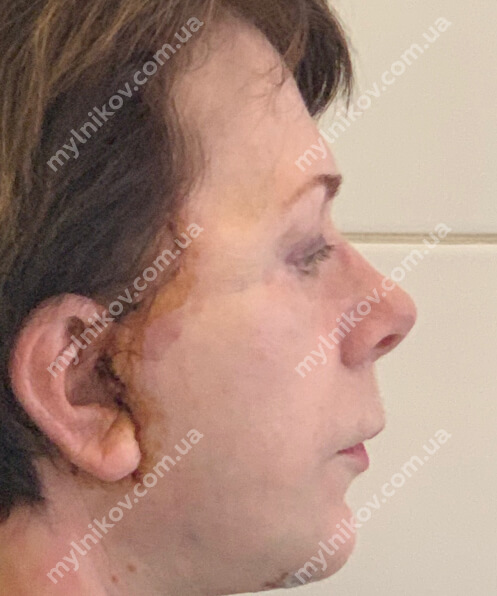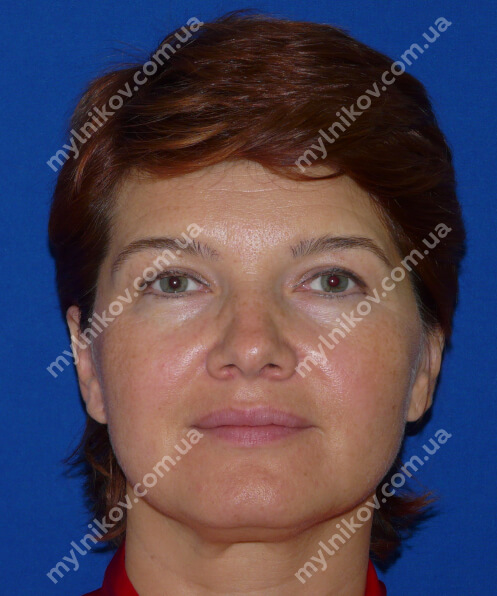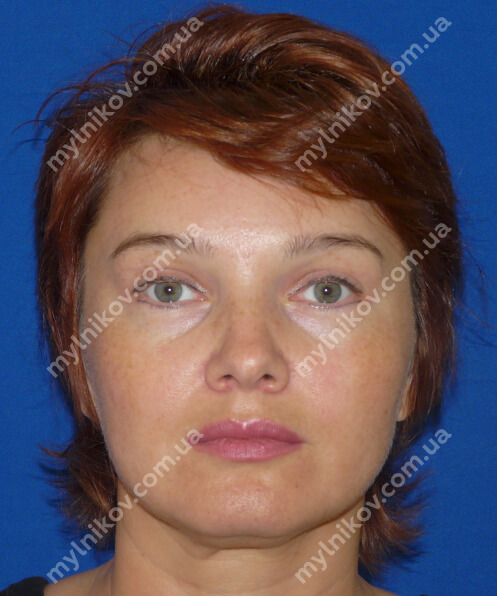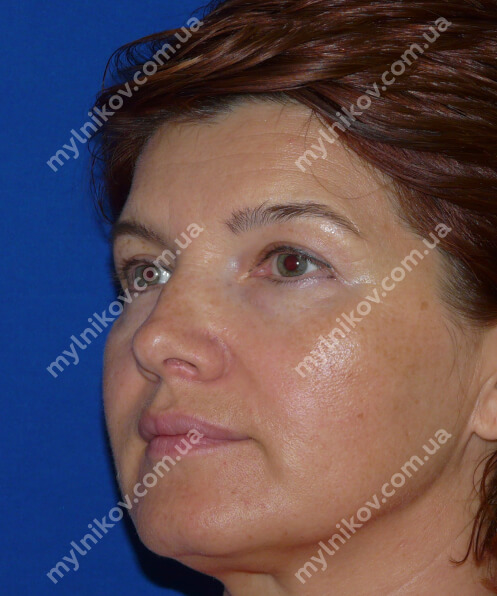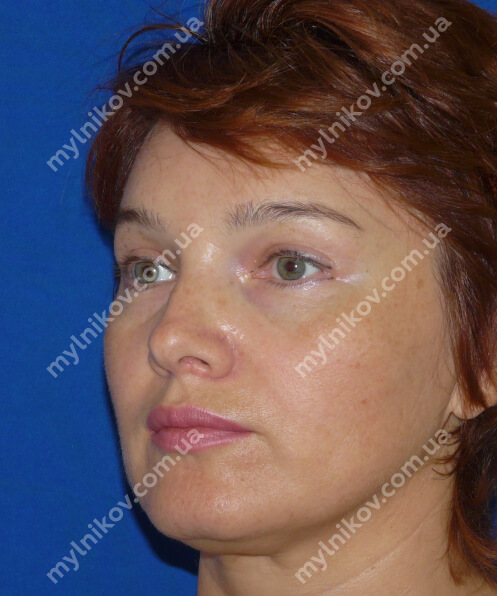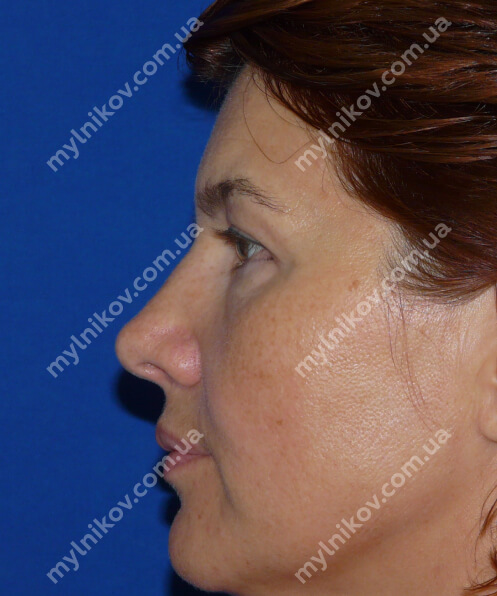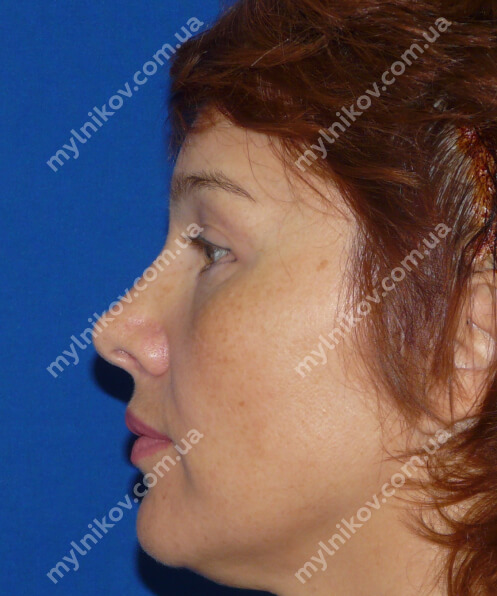Face and neck lift
A facelift, a “circular facelift”, face lifting, are usually called lifting the lower two-thirds of the face and neck. A “complete circular facelift” is the lifting of not only the lower two-thirds of the face and neck, but also the forehead. There are many surgical techniques for performing these operations today. Which one is best for you should be decided by the surgeon. The correct choice of facelift method is of great importance and directly affects the result of the operation. Naturally, the more techniques a surgeon owns, the freer and more efficiently he works.
Minilift (mask – lift, “lifting mannequins”). This method includes types of operations with limited sections, which are used to correct very early signs of aging (30 – 40 years). Minilift results are not pronounced, short-lived and, therefore, are not very popular with most surgeons.
Subcutaneous lift. An operation that removes only excess skin and does not affect the deeper structures of the face (subcutaneous fat, muscles and ligaments). The method is suitable for thin women with moderate sagging facial skin and a good tone of its deep structures. Also often used for repeated facelifts.
SMAS – lift. SMAS – sistema musculo – aponeurotic superficialis, or superficial muscular – fascial system. The shape of the cheekbones and lower jaw – the oval of the face – depends on the state of this muscular – connective tissue layer. SMAS with age seems to “sag”, and soft facial tissues “flow” down, form nasolabial folds and “lubricate” the contour of the lower jaw. To get a good result of the operation, the surgeon must return the SMAS to its original place and fix it securely. The classic SMAS – lift affects the cheeks and lower jaw, but does not significantly affect the condition of the nasolabial folds and neck. Advanced SMAS – lift extends below the neck, pulling the skin and muscles under the chin and lower jaw. High SMAS – lift also raises the tissues of the central part of the face, which allows you to fix the folds around the nose and mouth.
S – lifting, or tightening with a short seam. The name of this type of SMAS – facelift, comes from the S – shaped incision in the temple and in front of the ear. The incision in this type of operation does not extend beyond the auricle. The best candidates for S – lift are patients who do not have significant excess skin on their neck.
Sub-periosteallift. Subperiosteal lifting is a type of deep lifting of the upper part of the face. The operation allows you to raise eyebrows, eliminate deep transverse wrinkles of the forehead, straighten the “crow’s feet” around the eyes and lift the central part of the face. This lifting is usually performed using endoscopic techniques. A mini-camera is introduced through small incisions in the hair to allow visualization of the operation area, and all necessary manipulations are performed using special tools. This operation is good for patients 40 to 50 years old, when the soft tissues of the face are already “sliding” down, but there are still no significant excess skin.
If the patient has pronounced age-related changes in both the upper and lower parts of the face, as well as excess skin on the neck, I prefer to perform complex face rejuvenation – a combination of extended SMAS – LIFTc with endoscopic deep lifting of the upper part of the face and, if necessary, eyelid plastic .
Edoscopic anti-aging surgery
An endoscopic operation is a plastic operation that is performed not by cutting a large number of tissues, but using a small incision, or rather, even a puncture, with a diameter of only 0.5 cm. Such operations require special tools and they are somewhat more complicated than usual. But they have many advantages: for example, endoscopic surgeries allow you to avoid scars on the skin and many other unpleasant consequences that most often occur some time after plastic surgery. Such operations significantly reduce recovery time after surgery, reduce pain and avoid a serious postoperative condition. Many women prefer these operations, as they allow you to achieve the desired cosmetic effect, and then quickly restore the appearance, well-being and return to normal life.
In general, such operations are safer than normal operations. True, it is worth noting that, unfortunately, not all procedures can be performed using endoscopic surgery.

